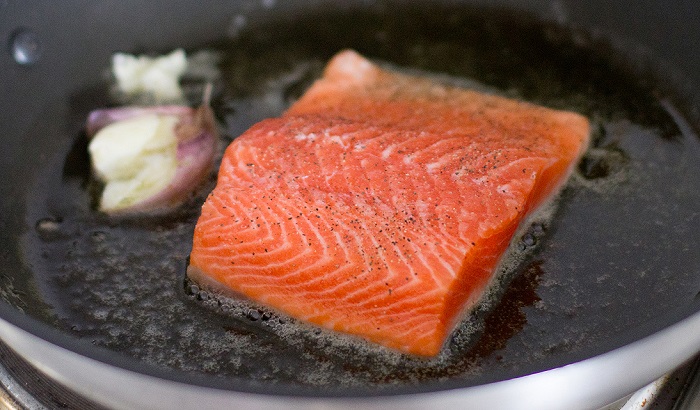
Whether you want to sizzle some prawns, sauté your veggies or sear a steak, knowing which pan to use for the job at hand could potentially transform you from an average household cook into the next Naked Chef!
Many of us don’t put too much thought into what pan we are purchasing other than to consider what we feel would be a good size and whether it would be easy to clean. But, for every shape and size of pan there is a specific purpose – and that purpose isn’t just to discipline husbands who step out of line (we joke of course) – there is so much more to think about if you really want to get the best results while cooking.
Ibili South Africa has an extraordinarily vast collection of cookware and their stunning range of Ibili pans is no exception. Their range includes frying pans, deep-fry pans, omelette pans, crèpe pans, square grill pans, induction pans, woks, as well as the incredibly popular Ibili granite pans to name but a few.
With so many pans in the market, it is quite understandable that it can become a challenging task to decide on which pan is ideal for your individual cooking requirements. Unless of course, you have the budget to get them all.
So, here are some key points to consider when choosing your next pan:
Quality heat distribution
If you’re tired of your pans wobbling on the stove, then forget about thin based pans, as they tend to warp over time, reducing their ability to remain stable or distribute heat evenly.
Lightweight but heavy-gauge pans, like the strikingly aesthetic Ibili granite pan, are far more effective at holding and spreading heat evenly across their surface.
You can easily test the gauge quality of a pan by giving the surface a slight wrap with your knuckles – if you hear a dull thud, you’ll know it’s good quality, if you hear a light ping – don’t buy the thing!

Image credit: ourwaytoeat.com
Heat responsiveness
When it comes to sautéing, it is imperative than the pan you use responds almost immediately to any alterations made to the heat source.
Sautéed garlic and onions, for instance, which form the base of so many great meals, are usually only cooked on a high heat until they release their sensational aromatic aromas. The heat should then be lowered to sustain those flavours. If, however, the pan does not cool quickly enough, those superb aromas can quickly turn to a less pleasant odour of smoky charred remains.
Cool Touch Handles
Of course, safety is paramount when it comes to working with extreme temperatures on the stove. A cool-touch handle is an excellent feature on any pan, ensuring safety and comfort while cooking.

Image credit: yumandyyummer.com
Size and shape – to sear or to sauté – that is the question
If you’re a big fan steak or fish fillets, you’ll want to consider a quality cast iron grill pan. These pans are ideal for searing fresh cuts of meat or delicious tender game fish fillets like Salmon or Tuna at intense heat. It’s a great health option too!
A good sauté pan, on the other hand, will have a wide flat bottom, with deep straight sides, long handle and a lid that fits snuggly, keeping the heat and flavours trapped in. This will allow you to sauté or “jump” the contents effectively. You’ll be familiar with this method if you’ve seen professional chefs toss and flip their ingredients before they land perfectly back in the pan – although you may also want to give this method a little practice to avoid YOUR ingredients landing perfectly on the kitchen floor.
Well, there’s some food for thought! If you excuse the pun.
To view the full range of Ibili Menaje kitchenware available in South Africa, check out the Binuns Online store today!
